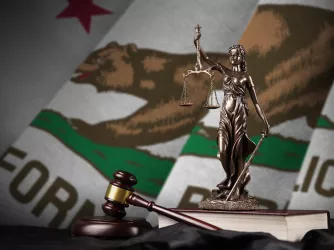Table of Contents
Swarthmore Policy Allows ‘Deviations’ From Own Procedures, Despite Past Problems

When I arrived at Swarthmore College in the fall of 2014, I was inundated with commentary about an ongoing federal Title IX investigation into the college, and I was shocked by allegations that Swarthmore systematically ignored cases of sexual assault. It was clear to me that Swarthmore had an inherent conflict of interest in adjudicating cases that might harm its image.
The Title IX investigation wasn’t the only source of criticism of Swarthmore’s policies and practices. A male student, proceeding under the pseudonym John Doe, filed a federal lawsuit against Swarthmore in January 2014, alleging that the college had expelled him for sexual misconduct using an unfair and discriminatory process.
The lawsuit alleged that in the spring of 2011, John Doe and a female student referred to as Jane Doe engaged in three sexual encounters. According to the lawsuit, Jane’s then-boyfriend threatened violence against John Doe after hearing of the interactions, and communication between Jane Doe and John Doe subsequently fizzled. Nineteen months afterward, while studying abroad in Scotland with the same boyfriend, Jane Doe reported to Swarthmore that she had been coerced during the first two encounters with John Doe. By her own admission, the third encounter was consensual. Swarthmore then conducted a two-month investigation which it concluded, according to the lawsuit, without issuing charges or taking any form of disciplinary action.
Then, in April 2013, two students filed a complaint against Swarthmore under the Clery Act, accusing the college of discouraging sexual assault reporting. Less than two weeks later, John Doe’s lawsuit alleged, Swarthmore’s administration re-opened John Doe’s case and issued formal charges. In May 2013, a group of students, including the two who filed the Clery complaint, filed a Title IX complaint accusing Swarthmore of failing to investigate sexual assault cases. Subsequently, a College Judicial Committee meeting, fast-tracked over the summer, found that John Doe violated Swarthmore’s sexual assault and harassment policy. He was immediately expelled. Just four days after the Office for Civil Rights publicly announced an investigation against Swarthmore in response to the Title IX complaint, the college’s president denied John Doe’s appeal.
John Doe’s lawsuit alleged numerous violations of Swarthmore’s procedural guidelines, as set forth in the student handbook, during the investigation and hearing. Swarthmore opened its investigation of Jane Doe’s allegations on November 28, 2012, while John Doe was studying abroad, and concluded the investigation on January 28, 2013, close to the 60-day window it had to resolve the case under its policies. Ninety-nine days later, on May 7, 2013, a full 160 days after Jane Doe’s report, Swarthmore reopened the case—well outside of the 60 days permitted by Swarthmore’s policies. Witness memory, already compromised by the 19-month period between incident and report, was further damaged.
According to the lawsuit, John Doe was not allowed to respond to the full investigative report, despite the handbook clearly providing that right. Two days prior to the hearing, one of the charges was changed from “harassment through communications” to “sexual harassment,” frustrating John Doe’s ability to effectively respond to the charges. Swarthmore scheduled the hearing in late May, after classes had ended, further hampering John Doe’s ability to gather witnesses and respond effectively.
Worse, the lawsuit alleged, Swarthmore failed to provide John Doe access to an impartial observer, as promised in the handbook. Instead, Swarthmore allowed Associate Dean Myrt Westphal, the administrator in the role of “prosecutor” (pressing charges and selecting them), to advise John Doe.
The lawsuit further alleged that during the hearing itself, correspondence between Jane Doe and the Title IX coordinator was submitted into evidence, despite the fact that John Doe had no prior knowledge of those communications and therefore was unable to properly respond to them. Finally, the Title IX investigator testified as a witness on Jane Doe’s behalf, despite the fact that she was not listed as a witness.
After reading through the allegations, I described these institutional failings to my peers at Swarthmore, who were universally shocked. Unfortunately, there had been little coverage of the lawsuit on campus, and the students I spoke with hadn’t heard of John Doe’s ordeal a full year after its conclusion. Students cannot advocate for fair procedures on campus when they don’t even know about the administrative workings of their institution in the first place. It is our duty, as students who care about civil liberties, to inform our peers and shine light on these injustices.
In November 2014, Swarthmore agreed to settle the lawsuit, admitting that “new information raises sufficient questions about the fairness of the hearing” and the “impartiality” of the panel it used to expel John Doe. Despite the successful settlement, Swarthmore’s 2015–2016 handbook for adjudicating cases of sexual assault still gives the college leeway to violate its own procedures and subject future students to the trials of John Doe. The beginning of the handbook states:
Rules of evidence ordinarily found in legal proceedings shall not be applied, nor shall any deviations from any of these prescribed procedures alone invalidate a decision, unless significant prejudice to a complaint, respondent, or the College may result.
While procedural errors are later listed as a ground for appeal, John Doe’s case perfectly illustrates an institution’s willingness to view its own procedural failings as amounting to less than “significant prejudice.” When he appealed, Swarthmore claimed that withholding evidence before the hearing, modifying the charges with little prior warning, failing to provide an impartial advisor to the defendant, and allowing a non-witness to testify all amounted to something less than “significant prejudice.” An institution’s self-interest in determining that it acted properly merits close scrutiny of its fidelity to its own processes. If John Doe’s case wasn’t an example of “significant prejudice” caused by egregious departures from policy, what is?
In federal court, Swarthmore acknowledged that its adjudications of sexual assault cases might miss the mark for finding truth and assigning responsibility. At Swarthmore and other colleges across the country, students are at the mercy of a broken system with little accountability. Until students read up on their institutional policies and stand up for justice, Swarthmore and its peer institutions will continue to violate basic rights and polish their images in the spotlight of national scrutiny.
Lewis Fitzgerald-Holland is a FIRE summer intern.
Recent Articles
FIRE’s award-winning Newsdesk covers the free speech news you need to stay informed.

O holy fight: New Hampshire Satanic Temple statue threatened by more than vandals

California and other states are rushing to regulate AI. This is what they’re missing

One day after FIRE lawsuit, Congress passes changes to filming permits in national parks
